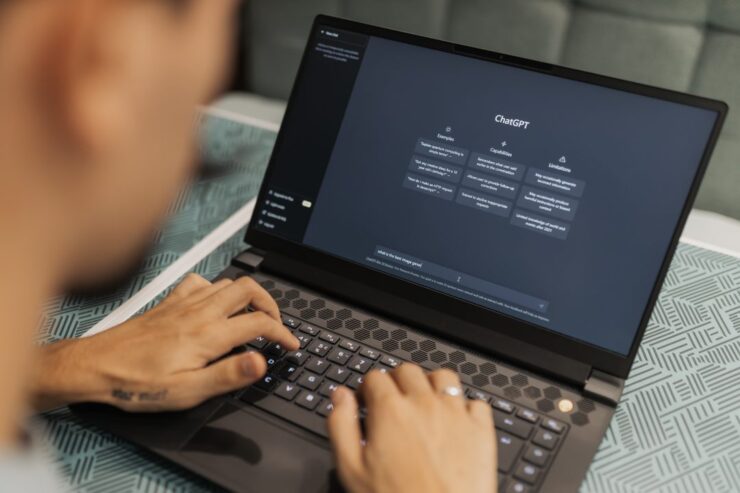Universities have forbidden students from using artificial intelligence programs to complete their assignments. The public school system in New York City has banned ChatGPT on school devices and networks, whereas, Italy has become the first Western country to ban using the advanced chatbot owing to privacy concerns.
The use of AI programs among individuals and organizations worldwide is on the rise. Recently, some students were caught using ChatGPT’s AI program to complete their essays. Cardiff University students admitted using the AI program to write essays which helped them get higher scores than they used to get without using it.
What is ChatGPT?
ChatGPT is an artificial intelligence language model developed by OpenAI to generate human-like responses to a wide range of prompts and questions. It has been designed to generate coherent and contextually appropriate responses to a broad range of queries. It is being used by individuals and organizations worldwide for a variety of applications, including customer service, language translation, and content creation.
The use of this artificial intelligence program is evolving in the education sector as well. Many students have started using it to generate ideas or create content for their assignments. However, there is an ongoing debate on the use of AI for the creation of assignments and exams. Some universities have very strict policies regarding the use of ChatGPT, while others are still working on it.
What do students use ChatGPT for?
ChatGPT’s AI program answers students’ queries, provides them with information, generates ideas, and creates content. Students admitted to using the AI program for writing essays and summarizing concepts.
Is using ChatGPT for assignments allowed?
The simple answer to this question is, No. Universities do not allow using ChatGPT or any other artificial intelligence program for content creation. The University of Bristol has declared ChatGPT’s use unauthorized and a form of cheating. Cardiff University also considered the use of AI software an academic misconduct. If a student is found using AI programs in assessments, he would be charged guilty of academic misconduct or cheating under the assessment regulations of universities.
Can professors detect the use of ChatGPT?
It is unlikely that a professor can directly detect the use of ChatGPT or any other language model. However, universities may be able to detect if a student is using it through other means. For example, if a student submits an essay or assignment that is significantly above their usual level of writing, it may raise suspicion and lead to further investigation.
Additionally, universities may use plagiarism detection software that could potentially detect text generated by ChatGPT if it has been previously used or published online. It is important to note that using language models to generate text for academic purposes without proper attribution is considered plagiarism and is a violation of academic integrity.
What are the limitations of ChatGPT?
While ChatGPT can be a useful tool for students, it is important to keep in mind its limitations. Here are a few potential limitations to consider.
Accuracy
While ChatGPT can generate responses that are coherent and contextually appropriate, it may not always be accurate. It is a machine learning model, and its responses are based on the patterns and associations it has learned from the text data it was trained on. However, it may not always have access to the most up-to-date or accurate information on a particular topic.
Bias
The language model may also exhibit biases based on the data it was trained on. If the data has biases, ChatGPT’s responses may also be biased. It is important for students to critically evaluate the responses generated by the chatbot and to verify the information with other sources.
Plagiarism
Using ChatGPT to generate content for writing assignments may lead to unintentional plagiarism. If a student uses this language model to generate text without properly citing the source, it may be considered plagiarism.
Lack of Creativity
Using ChatGPT to generate ideas for creative projects may limit a student’s own creativity and originality. While it can provide useful suggestions and prompts, it may not always provide unique or innovative ideas.
References
The AI program can create content for research or other purposes. However, it cannot insert references. Students are required to find and insert proper references into the content to increase the authenticity of the work.
Can ChatGPT replace textbooks for learning?
ChatGPT or any other artificial intelligence program cannot replace textbooks. While AI programs can provide a personalized and adaptive learning experience, they cannot fully replace textbooks for learning. Textbooks have many advantages that AI programs do not have.
Comprehensive learning
Textbooks provide a comprehensive and structured approach to learning a subject. They cover a wide range of topics and provide a detailed explanation of key concepts. In contrast, AI programs typically focus on specific topics and may not provide the same level of depth or breadth as a textbook.
More accuracy and quality
Textbooks have been developed and reviewed by experts in the field, who have carefully crafted the content to ensure accuracy and quality. AI programs, on the other hand, rely heavily on the quality of the data and algorithms used to develop them, and may not always provide accurate or nuanced information.
More Accessible
Textbooks can be used without access to the internet or technology, making them more accessible to students in areas where technology is not readily available or affordable. Moreover, there are free textbooks available in various formats letting students access course material without paying anything. On the other hand, ChatGPT is not free. Though it has a free version, that has certain limitations as compared to the paid version.
Final Thoughts
ChatGPT can be a useful tool for students, but it is important to be aware of its limitations and to use it responsibly. While AI programs can provide a personalized and adaptive learning experience, they should not replace textbooks for learning. Instead, AI programs can be used alongside textbooks to provide a more personalized and interactive learning experience. By combining the strengths of both resources, students can optimize their learning outcomes and gain a more comprehensive understanding of the subject matter.







